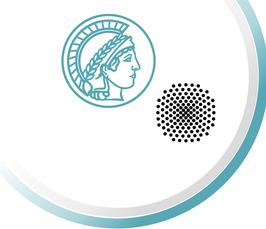Domain walls and skyrmions: From ferromagnets to ferrimagnets
Stuttgarter Physikalisches Kolloquium
- Date: May 18, 2021
- Time: 04:15 PM (Local Time Germany)
- Speaker: Geoffrey Beach
- Massachusetts Institute of Technology, Cambridge, USA
- Location: MPI-FKF Stuttgart
- Room: online

Tremendous progress has been made in engineering highly mobile domain walls and skyrmions in room temperature materials for racetrack-based applications. Most recent efforts have focused on heavy-metal/ferromagnet heterostructures with Dzyaloshinskii-Moriya interactions and spin-orbit torques, in which chiral domain walls and skyrmions can be stabilized at room temperature and readily manipulated. However, ferromagnets possess fundamental limitations on spin texture speed and size owing to stray elds and precessional dynamics. Antiferromagnets, on the other hand, possess no stray elds, and are angular-momentum-compensated, yielding extremely fast dynamics. Ferrimagnets exhibit similar behaviors at compensation, but are more readily probed since the individually sublattices are detectible and addressable owing to the fact that the electronic and optical properties of the elements on these sites are typically different. Here, I describe ferrimagnetic spin textures and dynamics in metallic and insulating ferrimagnets. Using Pt/GdCo/TaOx lms with sizable Dzyaloshinskii-Moriya interaction, we realize current-driven domain wall motion with a speed of 1.3 km/s near the angular momentum compensation temperature (T) and room-temperature stable skyrmions with minimum diameters close to 10 nm near magnetic compensation (T). By using temperature as a knob, the roles of compensation on the dynamics can be clearly extracted. I then describe recent work on insulating magnetic garnets with perpendicular anisotropy, in which we have discovered an interfacial Dzyaloshinskii-Moriya interaction which, combined with low damping and pure spin current injection mediated by a Pt overlayer, leads to exceptionally fast motion at extremely low current densities. Finally, I will discuss all-optical manipulation of skyrmions using ultrafast laser excitations, including picosecond generation of topological charge tracked in real time via single-shot soft x-ray scattering, and all-optical writing, deleting, and two-dimensional steering of skyrmions by light alone. Recent progress and future directions in these areas will be discussed.
Login data will be announced on the colloquium webpage